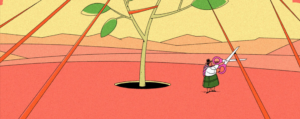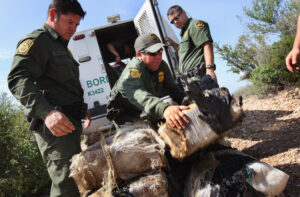The White House Office of National Drug Control Policy (ONDCP) announced yesterday that the average retail price of cocaine in the United States had increased by 44 percent between January and September 2007, indicating scarcer cocaine supplies.[1]
"This is not only the deepest [cocaine] shortage but it's the longest we've ever seen," said ONDCP Director John Walters in The Washington Post, describing the disruption as "unprecedented."[2] He made the announcement in Bogotá, where he told reporters that "we've never had disruptions of this magnitude before."[3]
But is the reported spike in cocaine's price in fact "unprecedented," as Walters claims? Are any previous examples of U.S. cocaine retail price increases comparable in duration and magnitude to the 44 percent increase reported for the first three quarters of 2007? And if so, what happened next in those cases?
According to cocaine price and purity estimates published by ONDCP covering 1981 through mid-2003,[4] there have in fact been four such previous instances: in 1981-1982 (when prices rose a cumulative 53 percent), 1990 (prices rose 55 percent), 1994-1995 (prices rose 39 percent), and 1999-2000 (prices rose 36 percent).
In these previous cases, cocaine's retail price subsequently fell – over the course of the next five to nine quarters – to a level below that of the quarter immediately preceding the three consecutive quarterly increases. In other words, within a year or two, all four of the previously detected cocaine price increases comparable or greater than the current spike had been fully reversed. In all these cases, prices ended lower than before the increases began.
|
Three-Quarter Period |
Price Increase |
Preceding Quarter |
Subsequent Decline |
|
1981Q4 – 1982Q2 |
53% |
$437 in 1981Q3 |
$424 in 1983Q3 (5 quarters) |
|
1990Q1 – 1990Q3 |
55% |
$179 in 1989Q4 |
$147 in 1992Q1 (6 quarters) |
|
1994Q4 – 1995Q2 |
39% |
$139 in 1994Q3 |
$107 in 1996Q4 (6 quarters) |
|
1999Q3 – 2000Q1 |
36% |
$118 in 1999Q2 |
$106 in 2002Q2 (9 quarters) |
Is it possible that this time will be different, that the detected increase will be sustained for a longer period, and that cocaine's price will not subsequently fall to new lows? The possibility cannot be discounted.
But based on the historical record, it would be more realistic to expect that, sooner rather than later, cocaine prices will fall again as suppliers adjust and availability rebounds. Indeed, the Justice Department's National Drug Intelligence Center (NDIC), in an assessment released on Wednesday – the day before ONDCP's announcement – already suggested that "cocaine availability levels may be returning to normal levels in some markets."[5] NDIC noted, moreover, that "because cocaine production in South America appears to be stable or increasing, cocaine availability could return to normal levels during late 2007 and early 2008."
[1] Office of National Drug Control Policy (ONDCP), press release: "White House Drug Czar, DEA Administrator Release New Data Showing Significant Disruptions in U.S. Cocaine and Methamphetamine Markets," November 8, 2007, at http://www.whitehousedrugpolicy.gov/news/press07/110807_2.html
[2] Allison Klein and Clarence Williams, "In D.C., Price of Cocaine Soars as Supply Declines," Washington Post, November 9, 2007.
[3] Joshua Goodman (Associated Press), "US drug czar touts cocaine shortage, despite conflicting supply data," International Herald Tribune, November 8, 2007.
[4] ONDCP, The Price and Purity of Illicit Drugs: 1981 Through the Second Quarter of 2003, November 2004, at http://www.whitehousedrugpolicy.gov/publications/price_purity/
[5] U.S. Department of Justice, National Drug Intelligence Center, National Drug Threat Assessment 2008, November 7, 2007, at http://www.usdoj.gov/ndic/pubs25/25921/25921p.pdf




